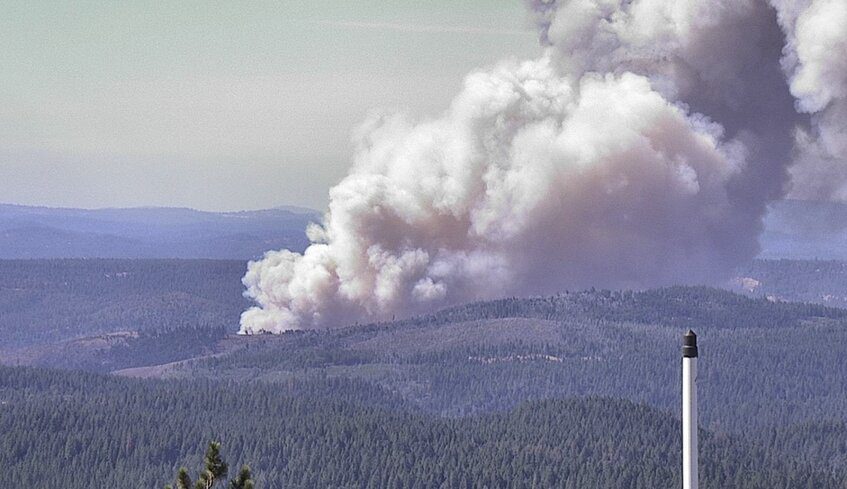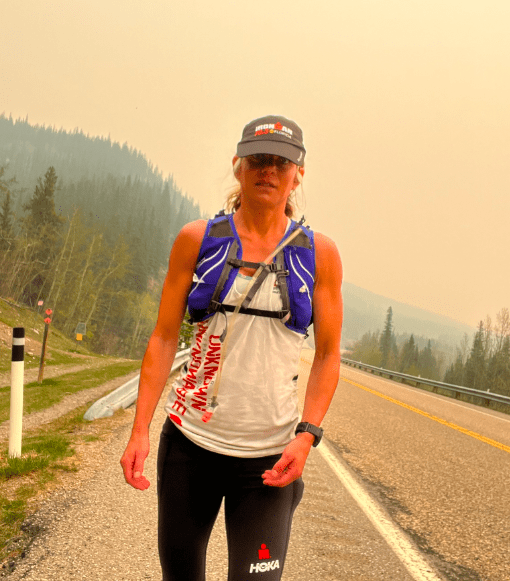How to factor air quality into your training
Respiratory risks to runners often go unseen
 Photo by:
US Forest Service
Photo by:
US Forest Service
The devastating wildfires that have displaced thousands in Alberta this month have also carried less severe, though quite serious, respiratory concerns outside the immediate area and into other parts of the country. Particles from wildfire smoke and other pollutants can have an impact on health even when not visible to the naked eye. Air quality should be of particular concern to runners, as intense outdoor exercise can aggravate the effects of airborne pollutants. Even when heading out for a run under bright blue skies, it’s important to factor air quality into your training plans. Here’s how:

Check the numbers
The Air Quality Health Index (AQHI) is a helpful tool that offers a snapshot of current and forecasted air quality with a simple numerical scale. While the data that go into the AQHI are complex—taking into account levels of ozone, particulate matter and nitrogen dioxide—the picture it offers for your area of Canada is straightforward. A reading of zero to three means a low health risk, four to six indicates a medium risk, seven to 10 presents a high risk and any number above 10 indicates very high risk. Current readings for your area, as well as hourly air-quality forecasts for the next 24 hours, can be found here. AQHI readings can also be accessed through the Government of Canada’s free WeatherCAN app.
SIRC and Health Canada are pleased to share the AQHI Module, which aims to better educate sport leaders on participant safety during periods of poor air quality.
Take the module and start spreading the word in your community about AQHI https://t.co/44TB3E6TN8 pic.twitter.com/pKs7k2XNKZ
— Sport Information Resource Centre (@SIRCtweets) February 25, 2023
Act on the information
The numbers only provide part of the picture, of course—it’s important to know how to act on them. The Sport Information Resource Centre has partnered with Health Canada to offer guidance on what action runners, coaches and athletic event organizers should consider taking in response to AQHI readings. They recommend that outdoor excercise and events be cancelled, rescheduled or moved indoors when an AQHI readings climbs above six. Readings between four and six indicate that outdoor excercise can proceed, but those with pre-existing medical conditions such as asthma should be careful not to overexert themselves and stay alert for symptoms such as dizziness, headeaches and diffculty breathing. A reading of three and below, meanwhile, signals an ideal window for outdoor sporting events and excercise in terms of air quality.
With the outdoor sport season fast approaching, it's time to have conversations with your team about athlete safety and air quality.
SIRC and Health Canada are your first stop for information on AQHI.
You can help clear the air on AQHI at your clubhttps://t.co/4Q2J7daTK5 pic.twitter.com/oNCCPPo7Tz
— Sport Information Resource Centre (@SIRCtweets) April 26, 2023
Minimize the risks
Runners may be especially susceptible to the effects of poor air quality and should consider taking steps to minimize the risks, even when AQHI numbers are low. Breathing through the mouth, common for many when tackling a pace above an easy effort, results in greater oxygen intake and potentially inhaling more pollutants. This can be compounded when following a route that weaves through industrialized areas or city streets clogged with traffic. To keep concerns about air quality at bay, consider planning your harder efforts for days when the AQHI forecast is below four. If you were planning to rack up kilometres in a busy urban area but the AQHI reading indicates a medium air-quality risk, it might be worth switching up your training and rerouting your run to the trails. If escaping the city isn’t an option, scheduling your runs early in the morning or late at night to avoid times of heavy traffic is an option for breathing a bit easier while making sure you get your kilometres in.


